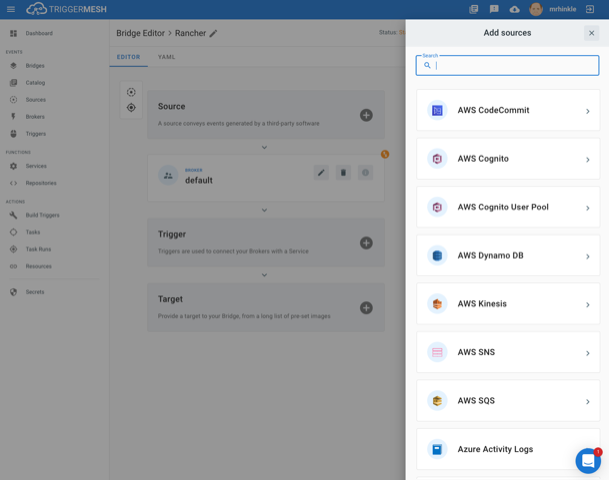TriggerMesh Allies With Rancher Labs to Simplify AWS Integration
TriggerMesh has partnered with Rancher Labs to make it easier to invoke Amazon Web Services (AWS) cloud services from within a Kubernetes environment.
Via a TriggerMesh cloud service based on Knative, open source middleware for accessing serverless computing frameworks developed by Google, workloads running on AWS or a local Kubernetes cluster can be triggered bi-directionally. That capability has now been extended to include Rancher Kubernetes Engine.
TriggerMesh CEO Mark Hinkle says as hybrid cloud computing evolves IT teams need to mash up services residing on the AWS cloud and on-premises IT environments using an event-driven platform. TriggerMesh accomplishes that goal by extending Knative to support proprietary AWS services.
Event-driven IT architectures inside and out of the cloud are becoming the foundation on which digital business transformation initiatives depend. Most digital business processes not only depend on launch analytics workloads in real-time, but they also need to be able to access resources that can dynamically scale up and down as needed. Rather than build and deploy all the code required to drive those processes within an application, it becomes easier to employ a serverless computing framework to invoke them as needed. Legacy applications based on batch-oriented processes can’t provide the level of real-time interactivity that end users expect.
In fact, one of the reasons IT organizations are embracing cloud-native technologies such as containers and Kubernetes is to replace outdated batch-oriented monolithic applications that are not as flexible as modern business processes now require.
Hinkle notes the Rancher platform is gaining additional traction in the wake of the company agreeing to be acquired by SUSE. IT organizations that rely on various open source platforms provided by SUSE are now also beginning to evaluate the Rancher Kubernetes Engine, says Hinkle.
It’s not certain at what rate organizations are moving to modernize application environments in the wake of the economic downturn brought on by the COVID-19 pandemic. Timelines for digital business transformation projects have certainly been accelerated but it remains to be seen if organizations have the cloud-native expertise needed to build and deploy next-generation applications faster.
There’s no doubt legacy monolithic applications will increasingly be carved up into a set of microservices that lend themselves more to event-driven platforms. However, many organizations are clearly struggling with first building microservices-based applications and then managing all the dependencies that are created between those microservices.
Serverless computing frameworks promise to make it easier to build and deploy events drive applications by making additional IT infrastructure resources available instantly. As such, adoption of serverless computing frameworks should increase substantially in the months ahead, especially as organizations embrace digital business transformation.
Regardless of approach, many IT teams are now discovering that putting an application programming interface (API) in front of a legacy monolithic application is only the first step in a journey of considerable length. The real challenge is building, deploying, maintaining and securing a new generation of applications built for purpose.





